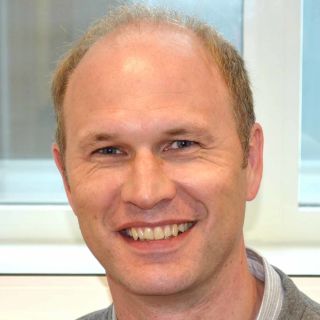Development & Regeneration
Led by Prof Paul Riley, to understand the underlying biology of cardiovascular development, develop novel models of congenital heart disease and to explore ways in which developmental processes can be harnessed to promote heart regeneration and repair.

The Development and Regeneration (D&R) Theme within the Oxford BHF CRE seeks to gain fundamental insights into normal cardiovascular development; highlight processes that are perturbed to give rise to birth defects and extrapolate basic developmental principles to resident cell-based reconstitution of tissues in adult cardiovascular injury and disease. The explicit integration of developmental biology and regeneration is unique within the UK, across Europe and arguably the world, and underpins two major, world-leading D&R-integrated initiatives at Oxford: the BHF Oxbridge Centre for Regenerative Medicine (2017-2021;) and the proposed BHF-supported Institute for Development and Regenerative Medicine (IDRM; occupancy Q1 2021).
The D&R Theme will enhance discovery science in cardiovascular development and will undertake novel approaches to model congenital heart disease. This will include investigating the cellular and molecular events that regulate the earliest initiation of cardiac function within the forming heart; studies of coronary blood and lymphatic vessel development and the role of environmental factors in causing specific heart anomalies at birth. This collective activity will encompass research on model organisms, but will also include a major focus on human heart development, arising out of a lead-role for D&R researchers within the Wellcome Human Developmental Biology Initiative.
Fundamental discoveries during development will underpin the transition to cardiovascular regeneration. The early heart development findings will be linked to the outcome of studies currently investigating optimal promotion of iPSC-derived cardiomyocyte differentiation/function and to an understanding as to how progenitor cells might integrate and function within survived muscle post-MI. Studies on vascular development will be translated to understand how to promote neovascularisation of the injured adult heart.
To facilitate basic insights into cardiovascular regeneration the theme will support the continued development of novel animal models, such as the Mexican cavefish for quantitative trait loci mapping and the neonatal mouse for functional imaging. Significant NGS and imaging datasets to inform on regeneration will be interrogated through outreach to the Big Data Theme. Progression towards clinical translation will be advanced through strong links with medicinal chemistry, tissue engineering and quantitative biology. High throughput phenotypic screens to identify small molecule enhancers of regeneration will be developed and run in conjunction with the Target Discovery Theme on platforms encompassing image analyses and target validation. Cell biology during development and regeneration will be combined with the use of “smart materials” for bioengineering to target the local stem cell niche and orchestrate endogenous repair mechanisms. A major new initiative will seek to integrate researchers in mechanistic mathematical and computational modelling to provide a cross-disciplinary training programme in quantitative approaches to regenerative medicine and to seed further therapeutic strategies and drug discovery.
-
Paul Riley
BHF Professor of Regenerative Medicine & Chair of Development and Cell Biology
-
David Greaves
Professor of Inflammation Biology
-
Roger Patient
Visiting Professor of Developmental Genetics
-
Nicola Smart
BHF Ian Fleming Fellow and Professor of Cardiovascular Science
-
Ellie Tzima
Professor of Cardiovascular Biology
-
Kieran Clarke
Emeritus Professor of Physiological Biochemistry
-
Mathilda Mommersteeg
Associate Professor of Developmental and Regenerative Medicine
-
Stefan Piechnik
Professor of Biomedical Imaging
-
Shankar Srinivas
Professor of Developmental Biology
-
Joaquim Vieira
Academic Visitor
-
Oliver Stone
Wellcome Trust Sir Henry Dale Fellow
-
Katja Gehmlich
Visiting Scientist
-
Rui Monteiro
University Research Lecturer
-
Blanca Rodriguez
Professor of Computational Medicine
-
Damian Tyler
Professor of Physiological Metabolism
-
Manuela Zaccolo
Deputy Head of Department

















